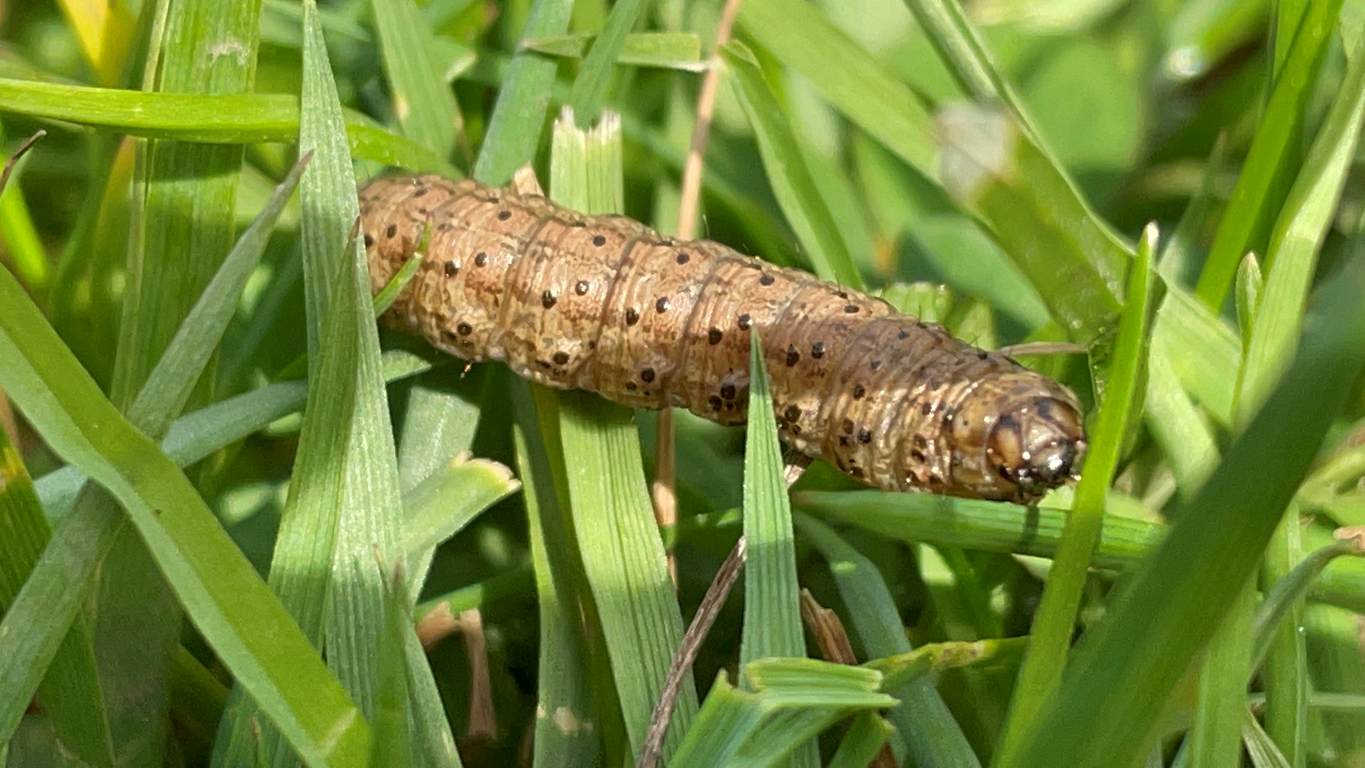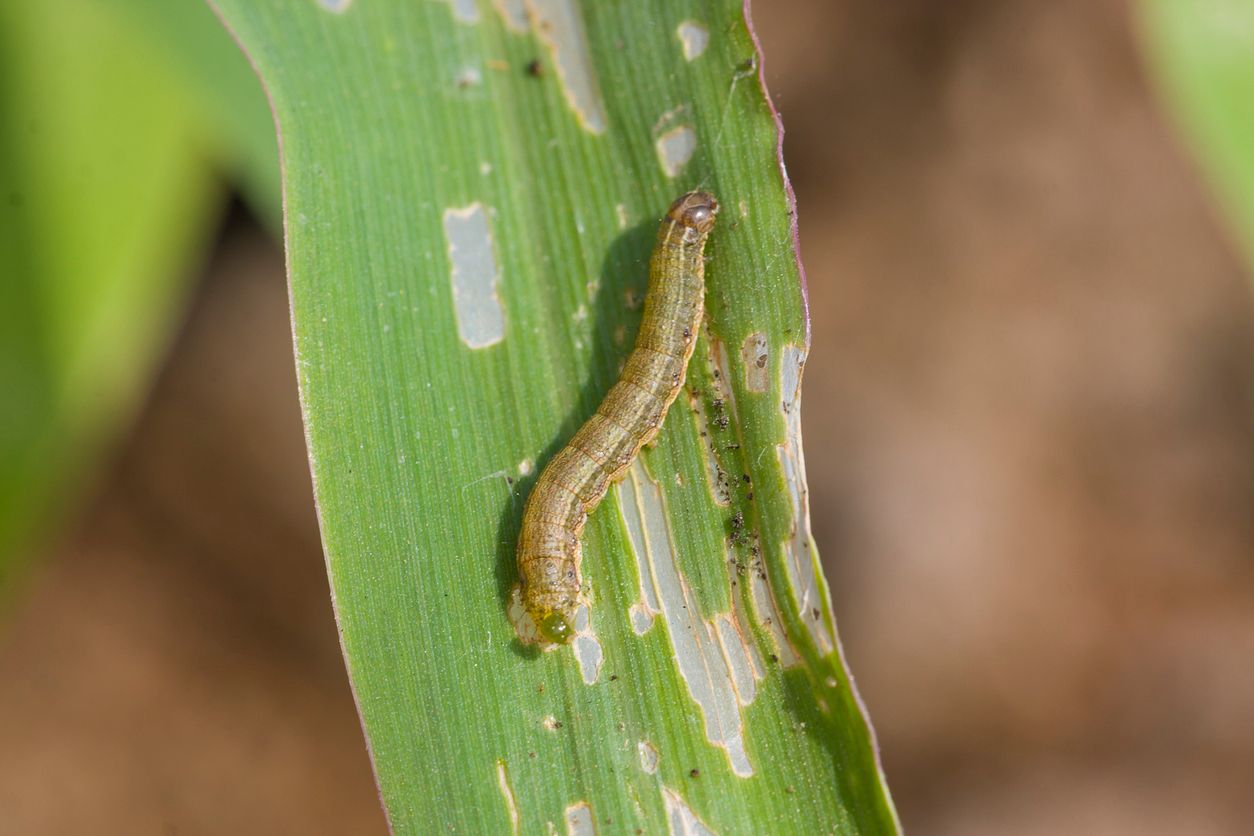
Sod Webworms in Florida: How They Ruin Lawns and What to Do
Sod webworms are one of the most frustrating Florida lawn pests, especially during the warm, wet months. If you’ve noticed moths flying around your grass in the early evening or strange brown patches appearing on your once-green lawn, sod webworms could be the culprit.
Learn how to identify sod webworm lawn damage, prevent further infestation, and decide when to bring in a professional lawn pest control company like Hulett.
What Are Sod Webworms?
Sod webworms are the larvae (caterpillars) of a small, tan lawn moth. These pests are known for chewing the grass, especially in St. Augustine grass, Bermudagrass, and Zoysia. While the moths themselves are harmless, their caterpillar stage feeds on your lawn and causes serious turf damage.
Life Cycle and Behavior of Sod Webworms
Adult moths lay eggs in the grass at night. Once hatched, the larvae begin feeding on the surface of the turf, typically during dusk and nighttime hours. These small greenish-brown caterpillars feed on the upper blades of grass and then hide during the day.
Signs of Sod Webworm Lawn Damage
One of the earliest signs is moths flying around grass at dusk. Soon after, you’ll see chewed leaf blades and irregular brown patches. This damage can resemble lawn diseases, but it’s caused by the feeding activity of the webworms.
Identifying Brown Patches and Chewed Grass Blades
Sod webworm damage starts small but spreads quickly. Brown, thinning turf and blades that appear notched or ragged are key indicators. Check for tiny green larvae near the thatch layer or silk webbing that the webworms spin to protect themselves.
Why Are Sod Webworms a Problem in Florida?
Florida’s warm, humid climate is ideal for the life cycle of sod webworms. Lawns with poor fertilization, excessive weeds, or frequent rainfall are especially at risk. Other pests such as fall armyworms, cutworms, grubs, and chinch bugs can compound the problem — making it difficult to diagnose without professional help.
How to Get Rid of Sod Webworms
The best defense against webworms in grass is quick action. Water deeply but infrequently, mow regularly, and avoid over-fertilizing. While there are DIY treatments available, they often don’t address the full infestation or protect against future outbreaks.
For long-lasting results, a professional lawn treatment plan is your best bet.
When to Call a Professional
If brown patches are spreading or you’ve confirmed the presence of larvae, don’t wait. A professional lawn care provider can properly diagnose the pest, customize a treatment plan, and restore your turf before further damage sets in.
Preventing Webworms in Grass
Keeping your lawn healthy and thick is your first line of defense. A proper fertilization program, combined with regular mowing, watering, and monitoring for early signs, helps prevent infestations before they start.
Lawn Maintenance and Prevention Strategies
Hulett recommends a proactive approach that includes:
- Routine inspections by trained professionals
- Family, pet, and eco-friendly treatments
- Year-round monitoring for Florida lawn pests
- Customized turf care based on grass type and season
Professional Help for Florida Lawn Pests
From sod webworms to grubs, chinch bugs, and more — Florida lawns face many threats. Choosing a pest control company with deep local knowledge ensures your lawn gets the protection it needs to thrive.
Contact Hulett for Sod Webworm Control
Protect your investment and restore your green lawn with help from the experts at Hulett. We offer professional lawn pest control that’s tailored to Florida turf — safe for your family, pets, and the environment. Whether you have St. Augustine grass, Zoysia, or Bermudagrass, we’ve got you covered.
Just Call Hulett today to schedule your FREE lawn inspection and get started on a healthier, pest-free lawn — all year round.




